New research shows Tyrannosaurus Tyrannosaurus relies on her sixth sense to 'love'?
In 2001, paleontologists discovered a dinosaur fossil in Glacier County, Montana, United States. After excavation, the fossil was transferred to the Whyte Museum of The Canadian Rockies for research.
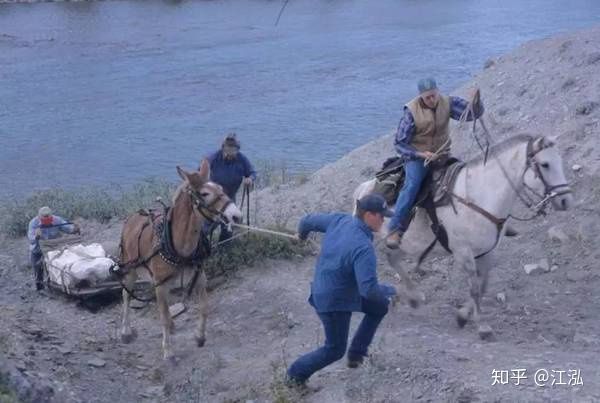
During the excavation, paleontologists used horses and mules to transport the fossils found.
On March 30, 2017, a research paper on the dinosaur fossils found was officially published. The article is titled "A new tyrannosaur with evidence for anagenesis and crocodile-like facial sensory system".
In the study, fossils were classified into the genus Daspletosaurus (a theropoda of the Super Typhoon family). The new species is fully named Daspletosaurus Horneri, with Horneri being named after paleontologist Jack Horner in recognition of his efforts and contributions in research.
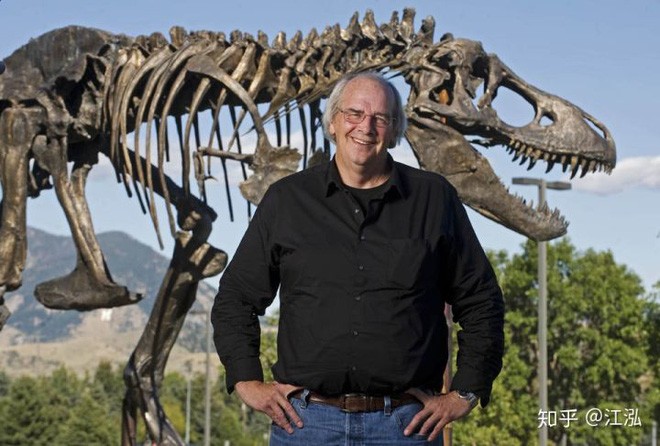
The famous paleontologist Jack Horner.
Daspletosaurus Horneri lived at the end of the Cretaceous from 75.1 to 74.4 million years ago, and the formation was found to be the Two Medicine formations formation. They are a huge carnivorous dinosaur with a body length of about 9 meters, about 2.5 meters high and weighing over 4 tons. They possess a fairly large skull with a grace length of 1 meter and two sharp teeth in the mouth with a large eye on the top of the head.
Through fossil analysis and modeling, it can be seen that Daspletosaurus Horneri is a violent dinosaur of extremely good health, their hind legs are long and strong with an appearance almost similar to tyrant dinosaurs. another, while their forelegs are identical to the "little hands" of Tyrannosaurus rex.
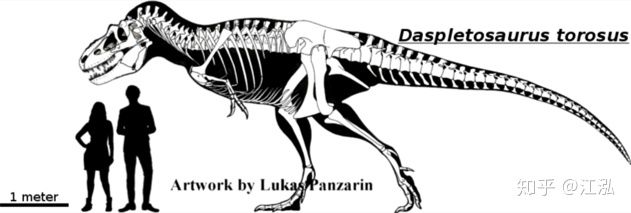
Compare body sizes of adults and Daspletosaurus Horneri.
In fact, the fossil record discovered in 2001 was not the first fossil specimen of this species to be discovered, instead archaeologists discovered them in the 1970s and at that time they were placed. His name is Daspletosaurus torosus.
These fossils include an almost complete skull, a complete front and hind legs. In addition to bones, this fossil also retains soft tissue fossils on the face and provides valuable information for paleontological researchers.
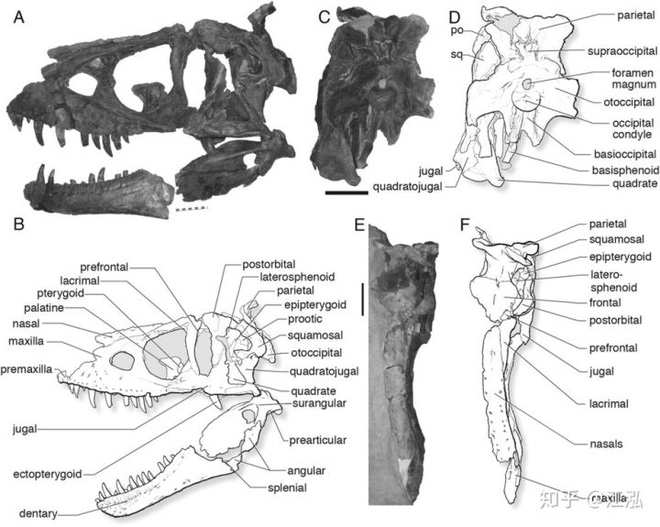
Paleontologists have noticed that the surface of the dinosaur's skull was filled with gaps, creating an exit for the nerve endings. The authors of the study suggest that 'Tyrannosaurs' may have snuggled their mouths together as an important part of the foreplay before sex. This finding is particularly interesting because it provides new facts for the evolutionary history of the trigeminal nerve that maintains the sensitivity of facial tissues, most of which are soft tissues of the arch. skulls, tissues and mucous membranes of the nose and mouth, teeth and parts of the hard cerebral cortex.
Soft tissue fossils show that the faces of Daspletosaurus Horneri are covered with scales, which indicates that their heads do not have hair and their mouths do not have lip-like parts. Not only that, this fossil sample also revealed much more important information. They have branches of the trigeminal nerve on the scales and on the surface of the nose.
This is similar to modern crocodiles, they also have the same nerves. This is a sensory organ that is very sensitive and can sense vibrations in water. But the nerve branches around the nose of Daspletosaurus Horneri were not used to sense the vibrations in the water, as they are a carnivorous dinosaur that has a completely terrestrial habitat.
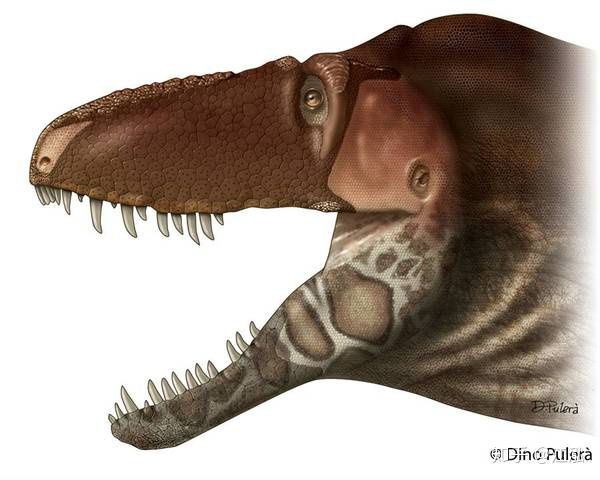
What exactly is the neural branch on the dragon nose of Daspletosaurus Horneri used for? Paleontologists have made three predictions: First, this can be considered a temperature sensation. Daspletosaurus Horneri can use their faces to recognize subtle changes in temperature. They will put their heads in the nest to feel the moderate temperature to ensure the eggs can hatch at the perfect temperature.
Second, detect the prey. Nerve branches around the nose can detect information and change the atmosphere around us, while enhancing the ability to perceive things around them.
Third, communicate. With sharp sensations around the nose, the Daspletosaurus Horneri were able to communicate by rubbing their faces against each other. This is how crocodiles use their sensors when they mate. In addition to mating, communication between different individuals will also be completed in this way.
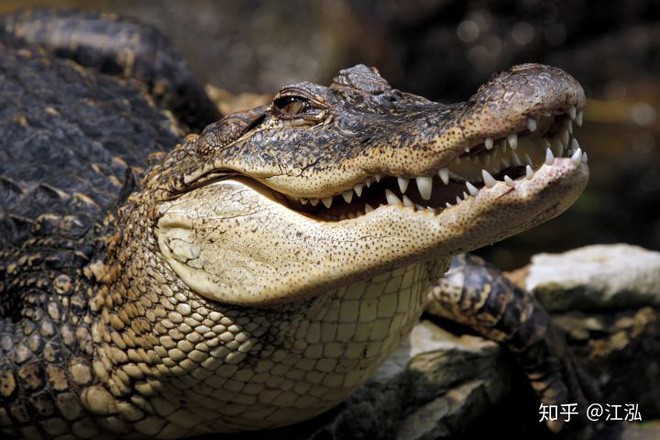
The front part of the head Daspletosaurus horneri is covered with a flat protective layer of scales with high tactile sensitivity. Perhaps this protective layer and sensitivities helped the Daspletosaurus horneri to help identify and capture prey. The snouts of these dinosaurs look like those of modern crocodiles.
Precisely because there is a trigeminal nerve with a sensory function on the skin of the nose, it can be said that the dinosaur Daspletosaurus Horneri has a "sixth sense". Daspletosaurus Horneri and Tyrannosaurus rex are quite closely related, through paleontological research suggests that nearly all Tyrannosaurus species have a "sixth sense"!
You should read it
- This is the most frightening 'monster' in Earth's history, the tyrant dinosaurs have become their meals
- Tyrannosaurus T-rex and Giganotosaurus, which one will win?
- 10 most dangerous prehistoric carnivorous dinosaurs
- Publish a 3D dinosaur skull print plan of 200 million years old
- Using Dinosaur 4D + and 4D dinosaur collection
- Fossils of Thailand's largest dinosaur have just been found
- Found dinosaur skin at the end of white chalk
- A simple way to help your body retain its natural fragrance all day long
May be interested
- What happens to the body when you fall in love?
 when you look at someone you love, chemicals are released in your body that cause your heart to beat faster and your pupils to dilate. if you've ever been in love, you'll be familiar with these signs.
when you look at someone you love, chemicals are released in your body that cause your heart to beat faster and your pupils to dilate. if you've ever been in love, you'll be familiar with these signs. - 6 ways to have a happy love
 many couples really love each other, but they don't know how to have a happy love.
many couples really love each other, but they don't know how to have a happy love. - What is a love story?
 young people today certainly know the love novels, the fascinating love stories. so what is a love story?
young people today certainly know the love novels, the fascinating love stories. so what is a love story? - New research shows: Money can really buy happiness!
 happiness is a rather vague category because each of us feels happiness in a different way. recent research shows that money can really buy happiness! . is it true?
happiness is a rather vague category because each of us feels happiness in a different way. recent research shows that money can really buy happiness! . is it true? - Good status and meaning about couple love
 the good status (stt) sentences of love below help you feel the taste of love. in love, it is not only pink, sweet honey, but it also mixes the acrid taste of the leaves, the salty taste of salt and the sour taste of fresh lemon.
the good status (stt) sentences of love below help you feel the taste of love. in love, it is not only pink, sweet honey, but it also mixes the acrid taste of the leaves, the salty taste of salt and the sour taste of fresh lemon. - New research shows: Testosterone hormones boost confidence in men
 a new study shows that men with high levels of testosterone can be more confident, easily reflect faster through intuitive, extremely good judgment.
a new study shows that men with high levels of testosterone can be more confident, easily reflect faster through intuitive, extremely good judgment. - How to Be a Systems Administrator
 today's workplace relies on computer systems. without computers and networks, we would be unable to communicate or even complete very basic tasks – we would be paralyzed. systems administrators keep the modern workplace going by m...
today's workplace relies on computer systems. without computers and networks, we would be unable to communicate or even complete very basic tasks – we would be paralyzed. systems administrators keep the modern workplace going by m... - 7 ways to practice unconditional love you need to know
 if you are someone who has never been unconditionally loved, then getting and giving that love to someone else can be quite difficult. however, the following article will reveal to you 7 ways to practice unconditional love to change your life. invite you to consult!
if you are someone who has never been unconditionally loved, then getting and giving that love to someone else can be quite difficult. however, the following article will reveal to you 7 ways to practice unconditional love to change your life. invite you to consult! - Super romantic love date status for couples
 summarizing wedding anniversary wishes, including a wish for your wife and husband, for friends to help you easily and quickly choose the best, meaningful and appropriate wishes to send to your spouse / my friends.
summarizing wedding anniversary wishes, including a wish for your wife and husband, for friends to help you easily and quickly choose the best, meaningful and appropriate wishes to send to your spouse / my friends. - 12 identification signs that you are in love
 feelings of love and emotions are loved as one of the best emotions that each of us can feel and experience in life. let's tipsmake.com see 12 identification signs that you are in love below!
feelings of love and emotions are loved as one of the best emotions that each of us can feel and experience in life. let's tipsmake.com see 12 identification signs that you are in love below!










 The mysterious bubble that appears in the center of the Milky Way galaxy is finally 'decoded'.
The mysterious bubble that appears in the center of the Milky Way galaxy is finally 'decoded'. 12 mysterious deepest holes in the planet
12 mysterious deepest holes in the planet Meteors have the power to destroy 10 billion atomic bombs hitting the Earth at the 'super dangerous' angle, completely eliminating dinosaurs
Meteors have the power to destroy 10 billion atomic bombs hitting the Earth at the 'super dangerous' angle, completely eliminating dinosaurs Misconceptions about biology that many people still believe in.
Misconceptions about biology that many people still believe in. The inventions show the sublime intelligence of Leonardo da Vinci
The inventions show the sublime intelligence of Leonardo da Vinci 12 strange and interesting facts about the universe: How many of you know?
12 strange and interesting facts about the universe: How many of you know?